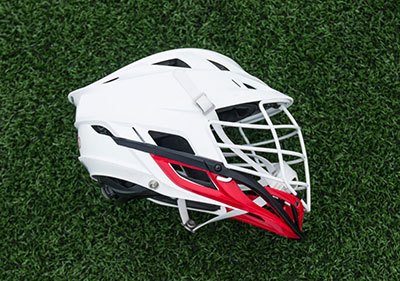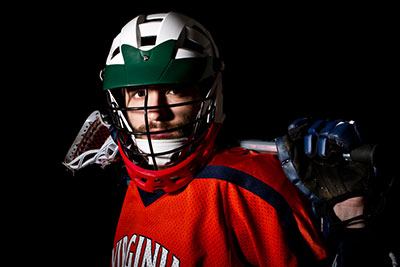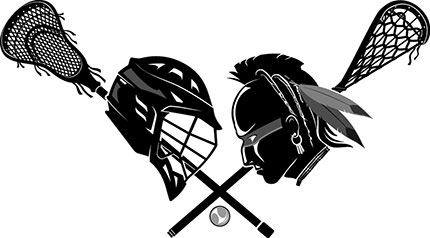Getting interested in lacrosse but not sure are helmets required in lacrosse?
In lacrosse, helmets are an essential part of the game for both the safety of the player and their performance on the field.
Helmets are required by many leagues, with some exceptions to be made based on personal preference or skill level.
This article will discuss why boys' lacrosse helmets are required, what types of regulations they must meet, and how they can benefit a player's experience.
More...
Take Away Key Points:
What is a lacrosse helmet?
A lacrosse helmet is a piece of protective equipment worn by lacrosse players of the sport of lacrosse. During a game, it is designed to protect the head and face from potential impacts, such as sticks and balls.
The helmet typically features a hard outer shell with an inner foam liner for additional protection. It also has adjustable straps to ensure a secure fit. Additionally, many modern helmets come with face masks that provide extra eye and mouth protection.
Lacrosse helmets are designed to meet safety standards by governing bodies such as US Lacrosse and the National Operating Committee on Standards for Athletic Equipment (NOCSAE). These standards include tests for impact absorption, retention system strength, and field of vision.

Why should you wear a lacrosse helmet?
Lacrosse helmets protect from potential impacts, such as sticks and balls, while also helping improve field performance. In addition, helmets can help prevent concussions and other forms of head trauma and provide added protection for the face and eyes.
In addition to being safe and protective, lacrosse helmets can also help players perform better in games by providing better visibility on the field or offering padded ear covers, which can reduce noise distractions. Therefore, wearing a helmet can be beneficial both in terms of safety and performance!
Are helmets mens' lacrosse protective gear only?
Men lacrosse players must wear hard shell helmets as this is a full-contact sport.
All boy's lacrosse helmets must meet specific safety standards set by governing bodies such as US Lacrosse and NOCSAE. These standards include tests for impact absorption, retention system strength, and field of vision.
This means that when boys lacrosse players wear a properly fitted helmet that meets these standards, they are well protected against potential injuries.
However, wearing helmets is not only protective gear for men's lacrosse. Women's lacrosse players and youth players also wear helmets when playing lacrosse to protect their heads from potential impacts from sticks and balls.
Is wearing a helmet mandatory in women's lacrosse?
Although protective headgear is mandatory in men's lacrosse, girls' lacrosse does not oblige players to wear protective gear.
However, it is highly recommended that women's lacrosse players wear protective headgear. Protective headgear provides additional protection from full-contact sports and is a great way to reduce the risk of concussions and other injuries. Recent studies, like one from Injury Epidemiology in 2015, have found that women's lacrosse players have the second highest number of concussions among all sports.
Therefore, wearing flexible protective headgear is essential for all female lacrosse players to ensure their safety. We can only hope that women's lacrosse will require mandated helmets in the future.
How to pick the best helmet size?

When selecting a lacrosse helmet, it is crucial to ensure you get the right size. A too-small or too-big helmet can be dangerous. Here's how to pick the best helmet size for your head:
- Measure your head circumference. Use a measuring tape, start at one inch above your eyebrows, and wrap it around your head. Make sure the tape measure is level with the ground as you go.
- Find a lacrosse helmet size chart and compare your head measurement to what is listed. Most lacrosse helmets are measured in inches or centimeters and will have corresponding sizes such as Small, Medium, Large, etc.
- Adjust the helmet straps until they fit snugly around your head without being excessively tight or loose.
- Try on the helmet over a thin cap or scarf to ensure that it fits comfortably and securely when wearing protective clothing like jackets or coats while playing lacrosse.
FAQs
Why do boys wear helmets in lacrosse and girls don't?
The main reason that boys are required to wear helmets while playing lacrosse, while girls are not, is due to the differences in the rules of the game. In men's lacrosse, body-checking is allowed as part of the game, so wearing helmets is required for safety reasons.
Why do they wear helmets in lacrosse?
Lacrosse helmets are an essential piece of safety equipment for players. The sport involves high speeds and contact between players, so the risk of head injuries is significant. Helmets provide a layer of protection from collisions that can limit the severity of a head injury.
Why are lacrosse helmets shaped like that?
The helmet's shape helps protect against head injuries by providing extra coverage around the back and sides of the head, including the vulnerable temporal area. It also allows for increased visibility so players can better monitor their surroundings on the field.
Are lacrosse helmets one size?
No, lacrosse helmets generally come in various sizes to provide the best fit for an individual player. Most lacrosse helmet manufacturers offer a range of sizes to accommodate different head sizes and shapes. A helmet must fit snugly on the head without being too tight or uncomfortable, as this will help to protect against injury.

How long are lacrosse helmets good for?
The lifespan of a lacrosse helmet typically ranges from three to five years, depending on the type and quality of the helmet. However, players must replace their helmets regularly to ensure maximum protection, as older helmets may not provide adequate coverage or have worn-down padding that could cause a head injury.
What are lacrosse helmets made of?
Lacrosse helmets are typically made from molded plastic, foam padding, and metal grills. The helmet's outer shell is usually constructed from a molded plastic designed to protect against impact and absorb energy without breaking. Inside the helmet is a foam padding layer for additional shock absorption and comfort.
Are hockey and lacrosse helmets the same?
No, hockey and lacrosse helmets are not the same. Hockey helmets have a more rectangular shape and larger protective cage than lacrosse helmets. Additionally, lacrosse helmets typically feature foam padding and metal grills not found in hockey helmets.
What to do with old lacrosse helmets?
Depending on the helmet's condition, it may still be usable and can be donated to local organizations or teams in need. Alternatively, some organizations may accept donations of used sports equipment, including old lacrosse helmets. If the helmets cannot be reused, then recycling them safely and responsibly is the best option.
Why do lacrosse players put tape on their helmets?
The tape not only adds a decorative element but also serves several practical purposes. For example, it can help to reduce glare from the sun and provide additional padding for a more comfortable fit.
Conclusion
Overall, there is no question are helmets required in lacrosse.
Lacrosse helmets are imperative for playing safely.
They minimize the risk of head injuries and provide players with an extra layer of protection when competing in a sport that involves physical contact. Although lacrosse helmet technology is constantly evolving, choosing the right helmet for your specific needs is relevant to maximize safety.
